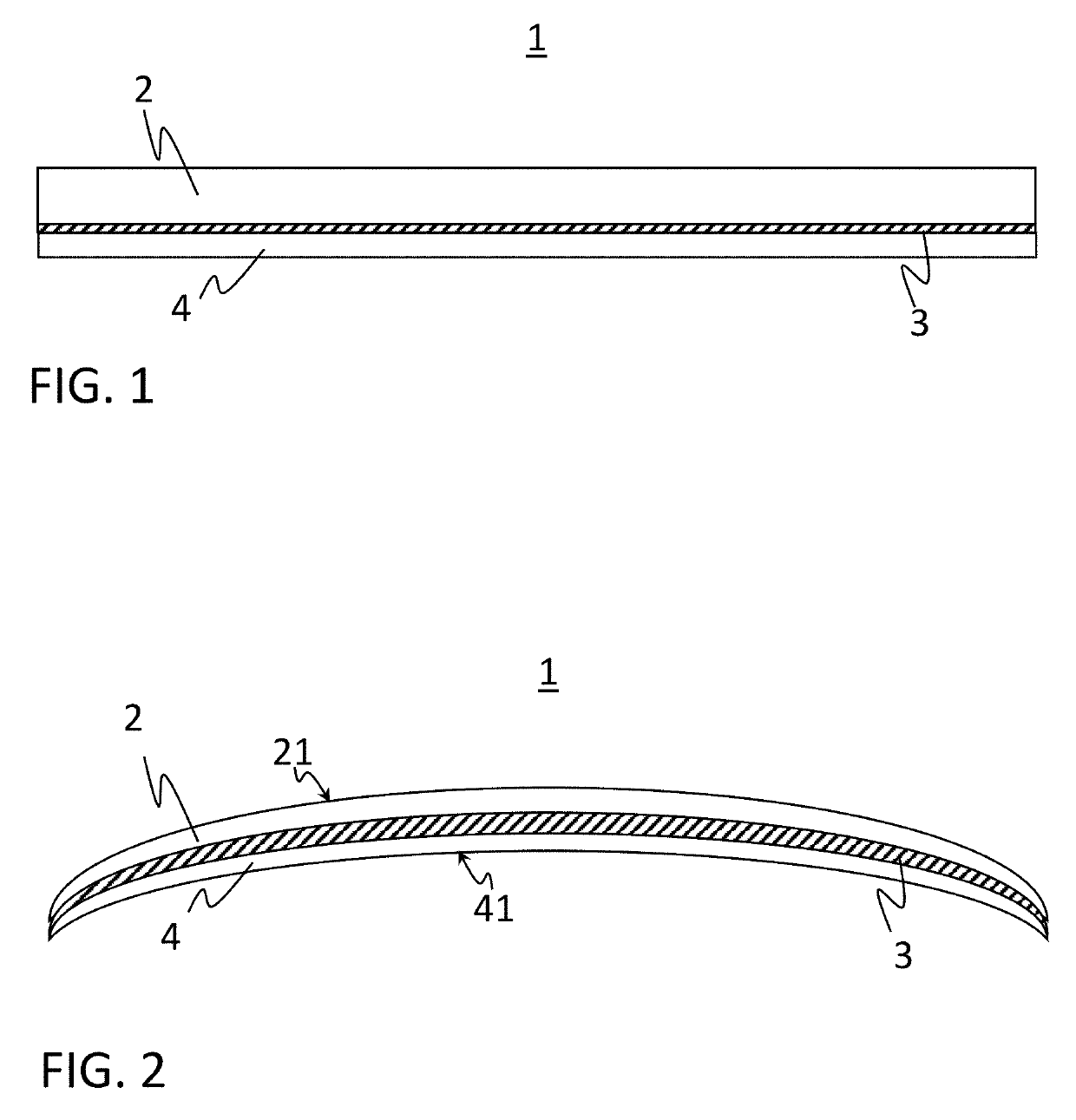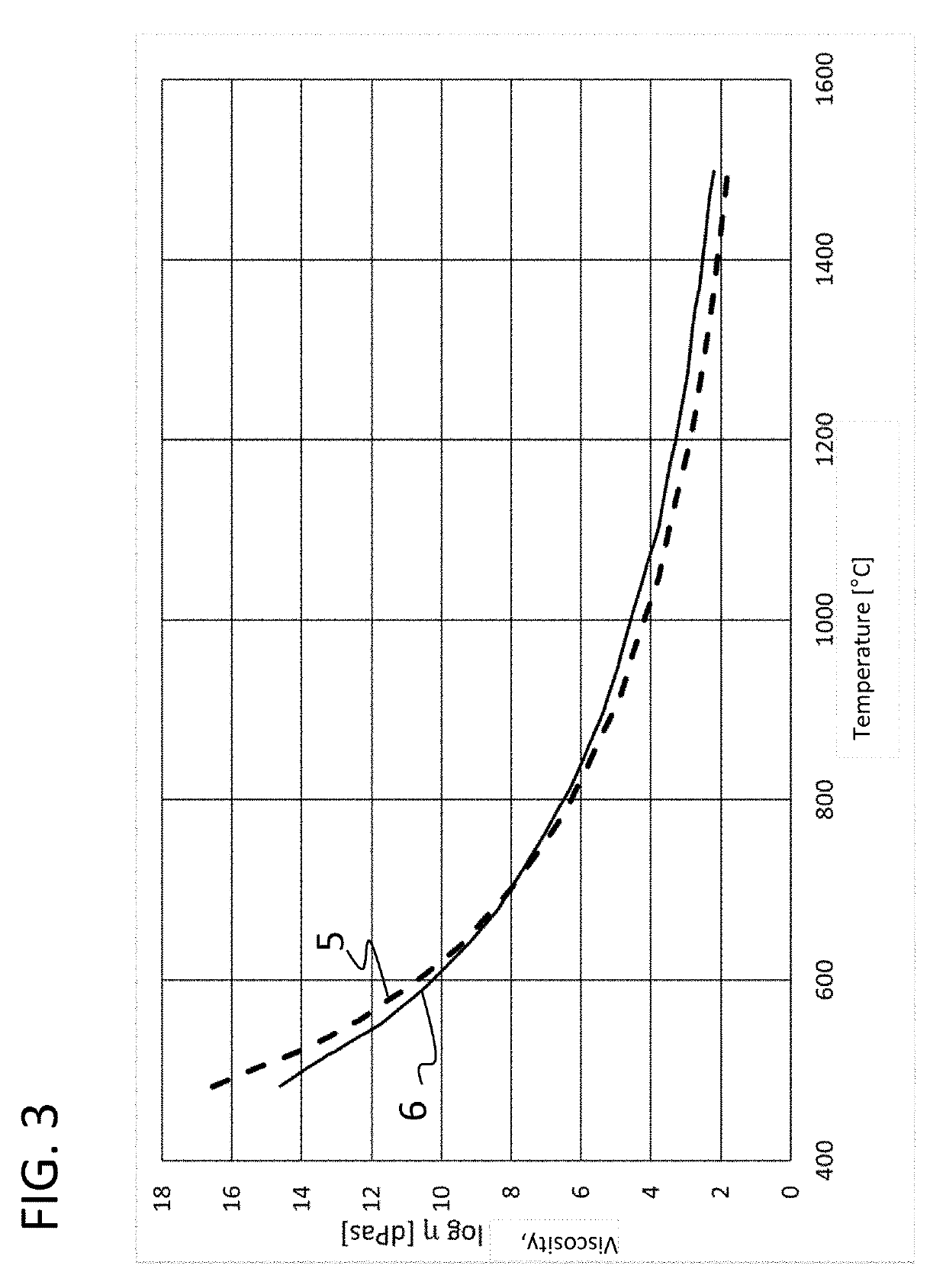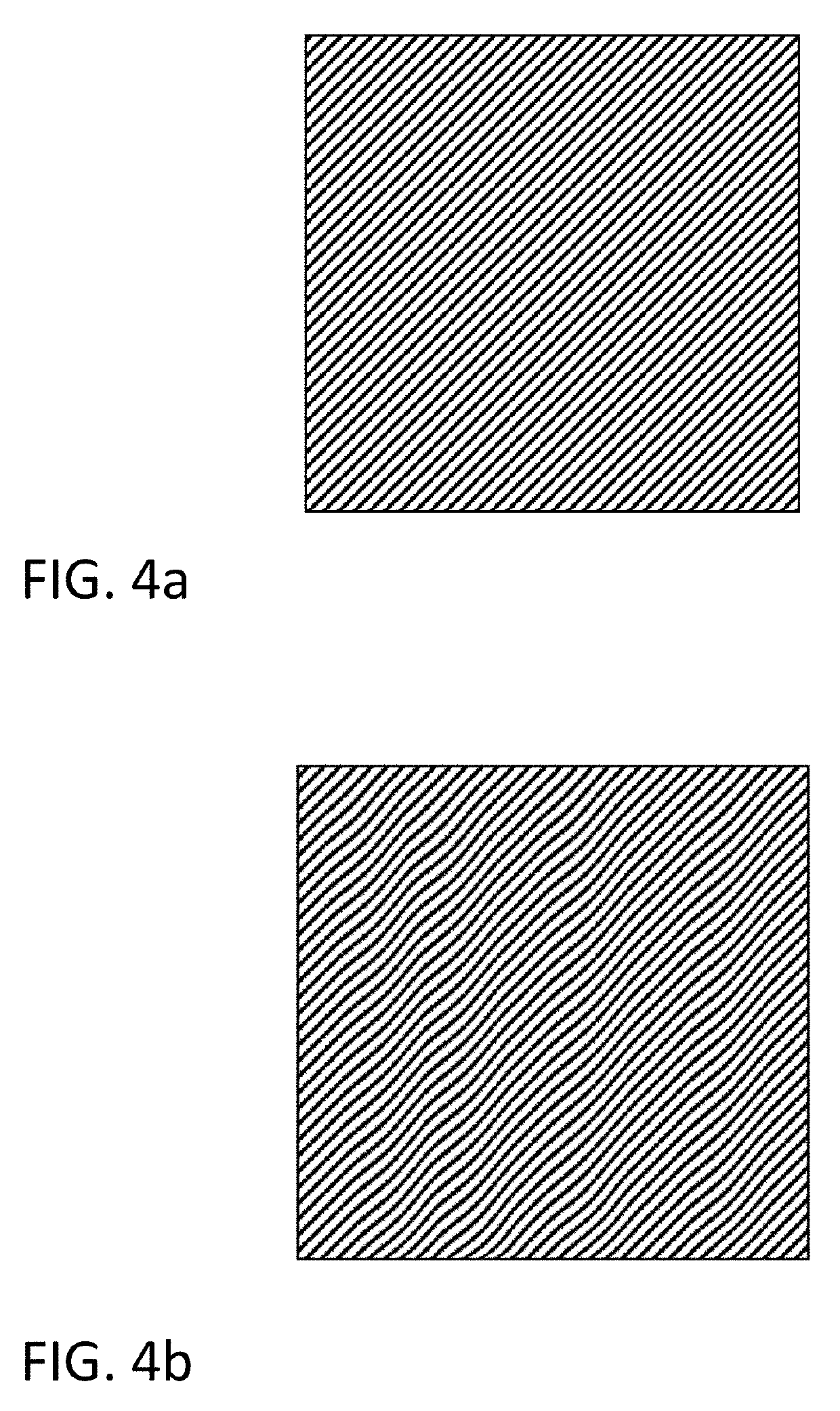Composite glass pane
a technology of composite glass and glass, applied in the field of laminated safety glasses and glasses, can solve the problems of low risk of injury to persons behind the glass pane caused by flying glass fragments, beneficial for limited applications, and is usually not possible, and achieves finely crumbled fracture patterns, high torsional rigidity, and high scratch resistance.
- Summary
- Abstract
- Description
- Claims
- Application Information
AI Technical Summary
Benefits of technology
Problems solved by technology
Method used
Image
Examples
Embodiment Construction
[0088]FIG. 1 is a schematic view, not drawn to scale, of a laminated glass pane 1 comprising a first glass sheet 2, a polymeric layer 3 disposed between and bonding the first glass sheet 2 to the second glass sheet 4, and finally the second glass sheet 4.
[0089]More generally, however, without being limited to the exemplary embodiment illustrated here, it is also possible for the laminated glass pane to comprise more than two glass sheets. For example, this may be the case when particularly high mechanical loads are expected and, accordingly, a particularly high strength of the laminated glass pane is desired.
[0090]The polymeric layer 3 has a thickness between at least 0.5 mm and at most 1.7 mm. It may be provided in the form of a film, for example a film comprising EVA and / or polyvinyl butyral, or in the form of a layer comprising a plurality of films, or a multilayer film. But it is also possible to form the polymeric layer in situ, by applying monomers to one of the two glass shee...
PUM
| Property | Measurement | Unit |
|---|---|---|
| thickness | aaaaa | aaaaa |
| thickness | aaaaa | aaaaa |
| thickness | aaaaa | aaaaa |
Abstract
Description
Claims
Application Information
 Login to View More
Login to View More - R&D
- Intellectual Property
- Life Sciences
- Materials
- Tech Scout
- Unparalleled Data Quality
- Higher Quality Content
- 60% Fewer Hallucinations
Browse by: Latest US Patents, China's latest patents, Technical Efficacy Thesaurus, Application Domain, Technology Topic, Popular Technical Reports.
© 2025 PatSnap. All rights reserved.Legal|Privacy policy|Modern Slavery Act Transparency Statement|Sitemap|About US| Contact US: help@patsnap.com



